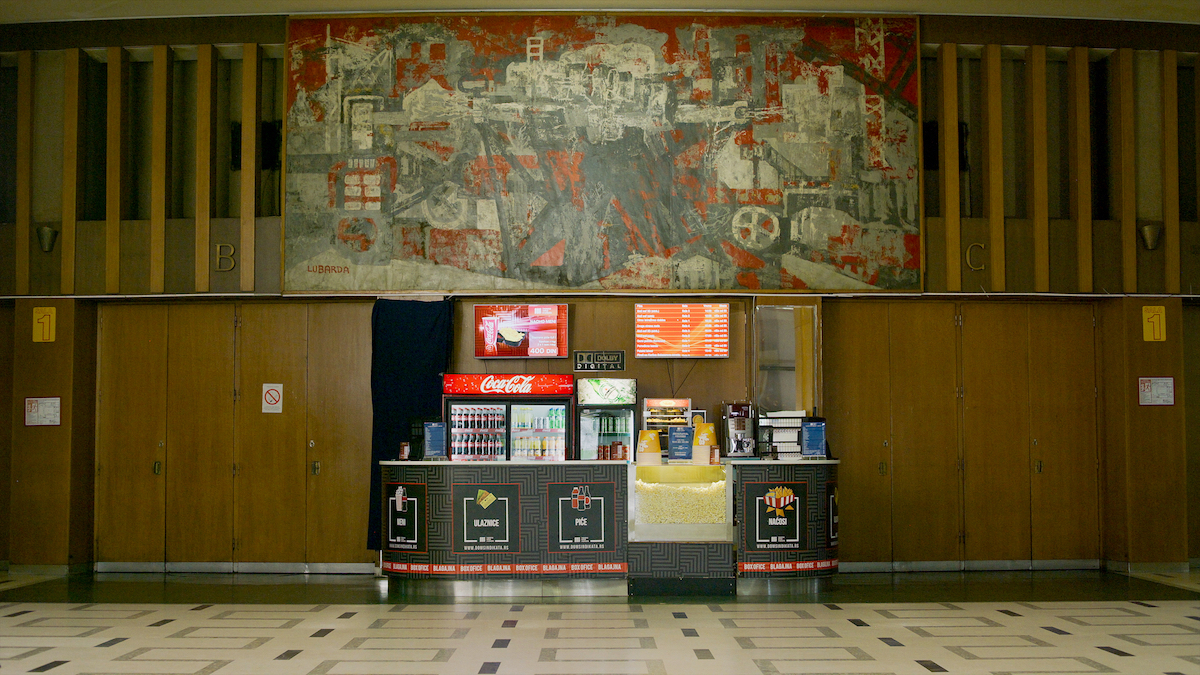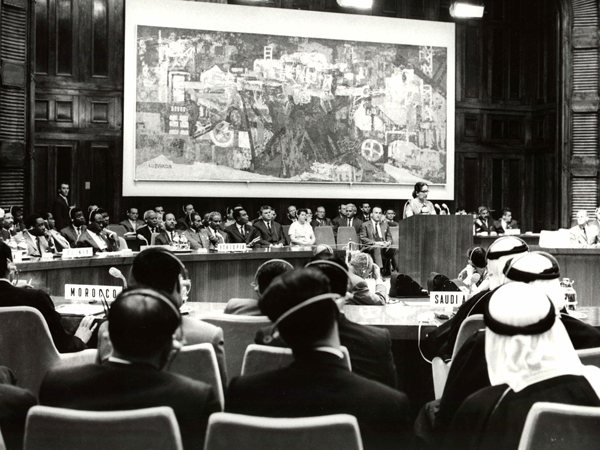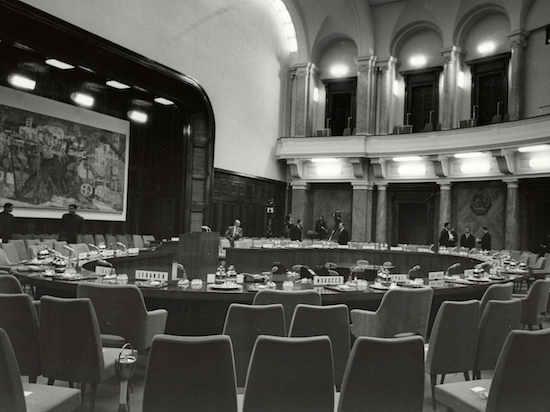
Media: Single channel 6K video (5600 x 3160 pixels), sound
Duration: 185'46''
Year: 2017
Camera: Kosta Glušica
Sound: Tonski arhiv Radio Beograda (Radio Belgrade Audio Archive)



|
||||
| WORKS |
Title: The Communist Painting in The Age of Digital Reproduction Media: Single channel 6K video (5600 x 3160 pixels), sound Duration: 185'46'' Year: 2017 Camera: Kosta Glušica Sound: Tonski arhiv Radio Beograda (Radio Belgrade Audio Archive) |
|||
| EXHIBITIONS | ||||
| CONTACT | ||||
| In September 1961, Yugoslav State and Party leadership organized the First Conference of Heads of State or Government of Non-Aligned Countries. The Belgrade Conference agenda covered acute problems the world was facing, insisting on an unconditional, complete and final abolition of all forms of colonialism, new-colonialism and imperialism. The West labelled the Belgrade Conference an anti-Western and anti-American gathering. The Soviet Union, also accused for Cold War situation and imperialism, reacted by restarting nuclear tests. The conference was decorated with Industrialization – a giant abstract painting done by Petar Lubarda, the most prominent Yugoslav painter at the time. It is in front of this painting that statesmen from 25 Asian, African, European and South American countries formulated basic principles and aims of Non-aligned movement, calling for World peace, disarmament, decolonization and economic development. The Conference was also attended by the representatives of 38 revolutionary and anti-colonial movements and groups from all over the world. | Half a century later, Belgrade is a deep periphery of capitalism, finding itself on the refugee route to Western countries. Neither Belgrade nor the refugees from African and Middle East countries that are passing through, seems to remember that it was possible to fight for a better future. I found the original Lubarda's painting in a downtown cinema, hanged over typical capitalistic setup – a digital cinema ticket office with cola's, popcorns and Hollywood movie trailers. Once a part of revolutionary and anti-colonial ideologies, the communist painting ended as a silent and helpless part of Western entertainment industry. I took a few hours of original audio recordings of the Conference (from Radio Belgrade Audio Archive), and attached them to the same painting again, in the video that shows its final state. | |||
 |
 |
|||
|
Photo: 1961, Museum of Yugoslavia archive | |||